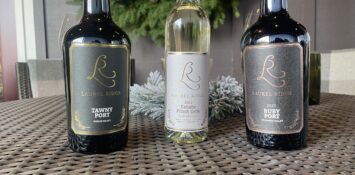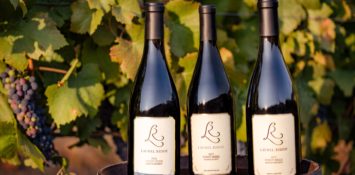Memories II: How Laurel Ridge became the seventh Oregon vineyard to have Phylloxera.
The story of the how the original Laurel Ridge vineyard became infected with phylloxera begins in 1974 when our founder, David Teppola, purchased a 240-acre farm in the heart of Oregon’s Willamette Valley wine country. The first grape vines were planted on the Laurel Ridge estate in 1980 but it hasn’t always been easy harvesting.
Susan, tell us why Laurel Ridge had to replant their vineyard in the Willamette Valley in 2015.
Susan:
This Laurel Ridge story goes all the way back to 1980 and the first year David began planting our vineyard near Carlton. When planning the vineyard, David selected varieties of Pinot Noir and Chardonnay that had been taken from cuttings of grape vines directly from French vineyards. This meant they were on their own rootstock. David chose to plant grapes on their own rootstock because it was simply cost prohibitive to plant grafted vines. It made the difference between 10¢ a plant to $2.25 a plant, back then. The first year we planted we put in over 35 acres of vineyard so the cost between grafted vs. non-grafted was an astronomical difference.
Grafting involves combining two different varieties or species to form a plant with new characteristics like pest or disease resistance, increased crop yield, etc. Leo Laliman, a French wine grape grower is credited with the idea of grafting European grape vines (Vitis vinifera) onto rootstocks from grape vines of North American origin. Because North American species of grapes coevolved with the spread of phylloxera, these grapes developed the necessary resistance mechanisms to prevent phylloxera from destroying the roots of the plant. (For those who wish to nerd out, Oregon State has a great article here explaining why you want grafted rootstock to prevent phylloxera.)
Fast forward to one afternoon in the mid 1990s. I was sitting at my desk at work when my phone rang. It was David on the other end with a sense of urgency in his voice (which was rare…). He said, “Well, we’re the seventh vineyard in Oregon to be designated to have phylloxera.”
It turns out that David had been observing patterns of diseased plants that seemed to grow as spring turned to summer. He knew that at a time in the grape vine’s life cycle when it should be thriving, an increasing number of plants in the vineyard were dying instead. So he called Oregon State University’s Enology Extension office to ask for advice. They ended up sending Barney Watson up to take a look, who said without a doubt our vineyard had been phylloxerated.
When David originally planted the Laurel Ridge vineyard, it was believed that the root louse that causes phylloxera wouldn’t be able to live this far north (north of 45th parallel). Obviously that turned out to be wrong; and what was worse, there was no treatment for phylloxera. It slowly kills the vine as it attacks the root system and prevents the plant from accessing the proper amount of water or nutrients.
Experiencing phylloxera was a devastating event for our farm, but with every loss comes the opportunity for new growth. We began replanting our estate vineyard in 2015 with roughly 24 acres of Estate Pinot Gris, Chardonnay, and Pinot noir producing exceptional vintages including our 2019 Pinot Gris and our 2018 Chardonnay.
We’re pouring these wines and more from our portfolio at our Carlton, Oregon tasting room 11-5 Wednesday-Monday. Or, you can visit us from the comfort of your home via our online shop to have wine shipped safely to your door.



